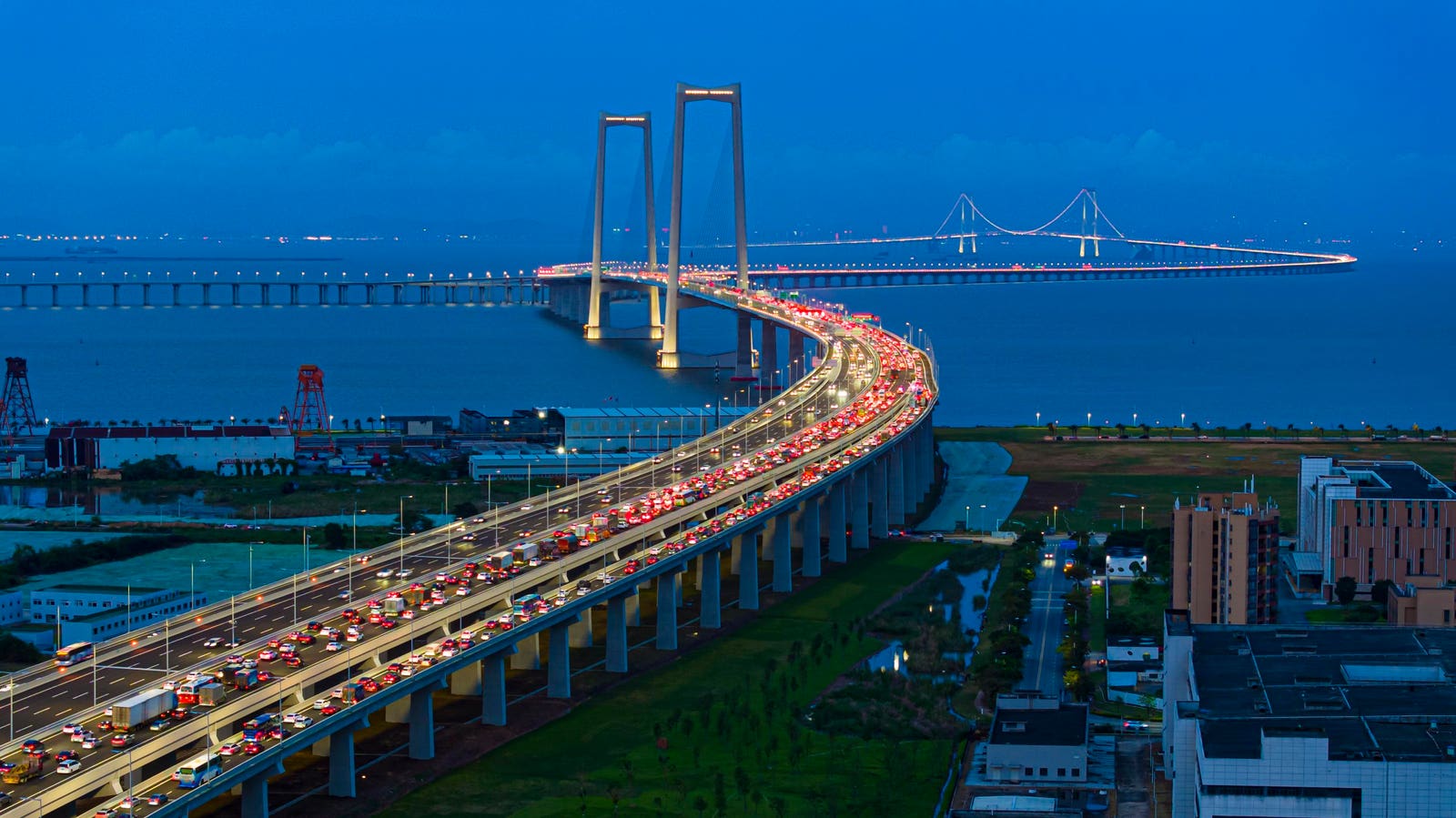In the global race to foster innovation, regional clusters such as California’s Silicon Valley and Japan’s Tokyo Bay have long dominated. But today, China’s Greater Bay Area (GBA), spanning Shenzhen, Hong Kong, Macao, Guangzhou, and seven other cities, has emerged as an ambitious challenger, rapidly evolving under Beijing’s top-down guidance.
Launched formally in 2017, the GBA initiative represents China’s boldest experiment in economic integration and innovation-driven growth. But how does this ambitious regional bloc—home to 87 million people—stack up against established innovation hubs like Tokyo and San Francisco?
On a recent reporting trip, I met a delegation of young international professionals and academics as they wrapped up a week-long exploration through the GBA. Speaking to members of this diverse group offered me a unique window into the rapid transformations shaping the region and the perspectives of global professionals experiencing them firsthand.
Accelerated Progress, Complex Integration
China’s ability to fast-track large-scale infrastructure is unmatched globally. Shenzhen’s transformation into a bustling technological metropolis stands out particularly. Torry Ko, an Australian Senior Strategy Manager for Asia-Pacific at machine learning firm Moloco, described Shenzhen’s development as “one of the most significant transformations I’ve seen globally”.
Yet, speed can come at a cost. Unlike the organic growth seen in California or Tokyo, the GBA’s centrally coordinated planning risks creating a patchwork of regulatory frameworks. Hong Kong, Macao, and mainland cities operate under vastly different laws, currencies, and governance structures, complicating seamless integration.
Pedro Henrique Steenhagen, a Brazilian PhD student in international politics at Fudan University, highlighted Macao’s strategic potential as a link to Portuguese-speaking countries. But he cautioned that realizing such international ambitions depends on addressing administrative frictions that hinder cooperation across borders.
Balancing Corporate Power and Entrepreneurial Spirit
A major differentiator between the GBA and its counterparts in California and Tokyo lies in the foundations of their innovation ecosystems. Silicon Valley and Tokyo Bay thrive on grassroots entrepreneurship, academic research, and venture capital. The GBA primarily leverages the scale and prowess of established giants such as Tencent and medical technology leader Mindray.
Vanessa Marina Dias Herdade, Digital Solutions Manager at Carrefour Global Sourcing from Portugal, expressed admiration for the ambition and drive among local tech firms but noted that smaller enterprises remain overshadowed by corporate giants, restricting innovation diversity.
To mature fully, the GBA needs greater institutional support for entrepreneurship and stronger university-industry collaboration—a formula that sustains California’s technological leadership.
Global Talent Attraction: Strengths and Limitations
The GBA’s potential as a magnet for global talent is evident. The region offers professionals affordability, vibrant cities, and significant career opportunities. However, regulatory transparency and long-term stability remain areas of concern.
Ko praised Tencent’s corporate culture as genuinely “open and globally aware,” crucial in attracting international talent. Hugo Fontanel, a French senior manager at pharmaceutical company ViiV Healthcare, commended the digitization and ease of urban services in Shenzhen and Hong Kong, describing them as “impressive”. Yet both emphasized that sustained global attraction hinges on clear legal frameworks and transparent residency paths.
Tanvir Parvez Matobbar, a Bangladeshi student leader at Tsinghua University, emphasized the diverse opportunities within the region itself, noting the potential to enhance global appeal through localized strengths.
A Future Beyond Infrastructure
Physically, the GBA is advancing rapidly, surpassing California’s fragmented transit networks and even rivalling Tokyo’s aging but extensive infrastructure. Visits to projects such as the Hong Kong-Zhuhai-Macao Bridge and the Hengqin New Area showcased significant connectivity improvements. However, Marcelina Liszewska, a Polish student in Asian studies, highlighted disparities among cities regarding governance and data privacy, potentially limiting cohesive regional growth.
Participants concluded that lasting success would require addressing deeper issues beyond infrastructure—social equity, environmental sustainability, and regulatory coherence.
Stefanie Tanya Jacqueline Spescha, a Swiss consultant and quantitative analyst at sustainability firm Sim2Sustain, emphasized the importance of institutions that nurture grassroots innovation and international collaboration, critical for the GBA’s evolution.
Ultimately, the Greater Bay Area represents a unique hybrid—an unprecedented blend of central government ambition and local diversity. While it does not yet match Silicon Valley’s entrepreneurial density or Tokyo’s policy stability, the GBA’s scale, rapid development, and state backing create enormous potential.
The region’s true test lies ahead: Can it move beyond state-driven infrastructure toward a balanced ecosystem that supports grassroots creativity, global talent, and integrated innovation? If it succeeds, the Greater Bay Area may redefine what it means to be a global innovation hub in the 21st century.








